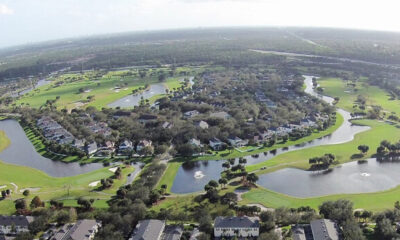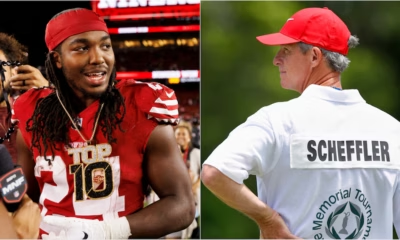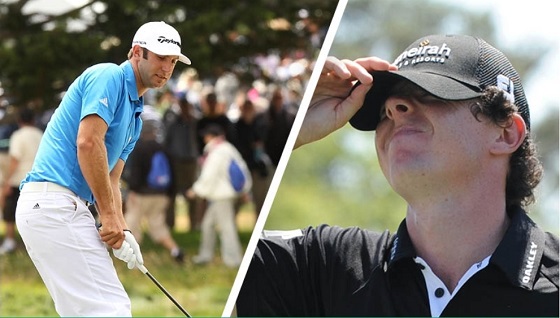Entertainment
Golf Like You’ve Never Seen It Before

Welcome to the Future of Golf
Forget everything you know about traditional golf tournaments. The Tomorrow Golf League (TGL) is here, and it’s ready to redefine the sport. Imagine the world’s best players, cutting-edge technology, and non-stop action packed into two electrifying hours. Sound good? Let’s dive into what TGL is all about and how you can watch and join in the excitement.
TGL, presented by SoFi, is the brainchild of Tiger Woods and Rory McIlroy. This revolutionary league blends real-life golf with virtual gameplay, creating a high-tech, fast-paced experience like nothing you’ve seen before.
- Six Teams of PGA TOUR Stars: The league kicks off with six stacked teams, each featuring four world-class players.
- Prime-Time Matches: Forget those day-long tournaments—TGL matches are played in just two hours, making them perfect for prime-time TV.
- High-Tech Venue: Matches take place at the state-of-the-art SoFi Center in Palm Beach Gardens, Florida, complete with massive screens and an innovative short-game complex.
How Does it Work?
TGL takes place in a hybrid environment that combines the best of virtual and physical golf:
- Virtual Long Shots: Players hit drives and approach shots into a massive 64’ x 53’ simulator screen.
- Live Short Game: Once on the green, the action shifts to the “GreenZone,” a real-life short game area designed to simulate different course conditions.
- Shot Clock: Players have just 40 seconds per shot, keeping the pace fast and thrilling.
- Mic’d Up Players: Hear the strategies, banter, and personalities of the players in real-time.
Each match features 15 holes, broken into team-based “triples” and individual “singles” sessions. Scoring is straightforward, making it easy for fans to follow.
The TGL roster reads like a golf hall of fame. Here’s a breakdown of the teams:
- Atlanta Drive GC: Justin Thomas, Patrick Cantlay, Billy Horschel, Lucas Glover—a powerhouse team blending experience and firepower.
- Boston Common Golf: Rory McIlroy, Keegan Bradley, Hideki Matsuyama, Adam Scott—loaded with precision and consistency.
- Jupiter Links GC: Tiger Woods, Tom Kim, Max Homa, Kevin Kisner—Tiger’s team is as exciting as it gets.
- Los Angeles Golf Club: Collin Morikawa, Sahith Theegala, Tommy Fleetwood, Justin Rose—a mix of youth and veteran savvy.
- New York Golf Club: Matt Fitzpatrick, Rickie Fowler, Xander Schauffele, Cameron Young—a lethal combination of flair and focus.
- The Bay Golf Club: Ludvig Åberg, Wyndham Clark, Min Woo Lee, Shane Lowry—bringing a global flair to the competition.
With these players on deck, you can expect drama, skill, and jaw-dropping moments every match.
TGL isn’t just golf—it’s an experience. Here’s why fans are buzzing:
- Fast-Paced Action: Two hours of high-intensity golf—no downtime, no filler.
- Star Power: Watch the biggest names in golf go head-to-head.
- Immersive Technology: Feel like you’re part of the action with virtual and live elements.
- Prime-Time Drama: Matches are perfectly timed for evening viewing, making it easy to tune in with family and friends.
The TGL’s inaugural match takes place tonight, January 7, 2025, at 9:00 PM EST. Here’s how you can catch the action:
- TV: Tune in live on ESPN.
- Streaming: Watch on ESPN+ or your preferred streaming platform.
- Global Options: Fans around the world can check local listings for viewing options.
Want to take your fandom to the next level? Here’s how:
- Find Your Team: Take the “Find Your Team” quiz on tglgolf.com and pledge your allegiance.
- Shop Merchandise: Rep your team with official TGL gear.
- Join the Conversation: Follow TGL on social media for updates, highlights, and behind-the-scenes content.
Blog
The Most Dramatic Final-Day Finishes in Major Sports Tournaments
Many sports have some nail bitting finishes. Robert Greenfield recaps some major final day finishes in sports history.
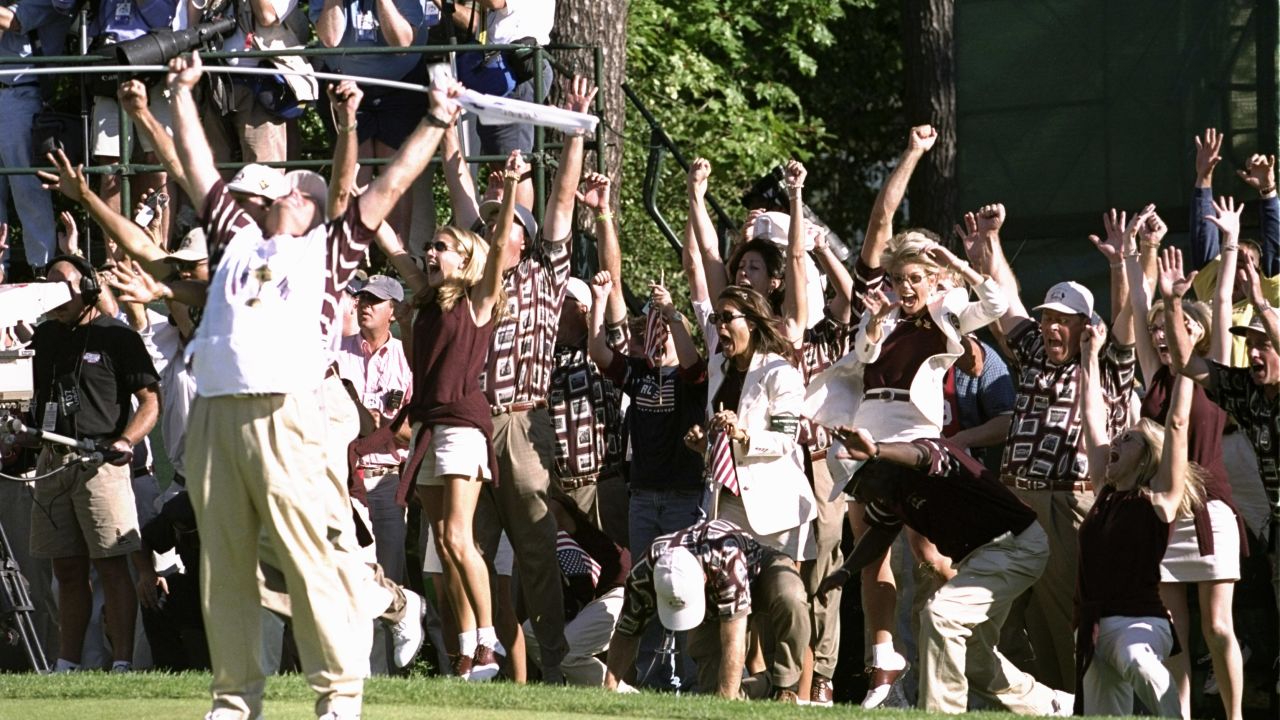
The final day of major sports tournaments often delivers an exhilarating end to the competition that keeps fans on the edge of their seats. There’s no better testament to the suspense and drama of sports than those last-minute turnarounds, nail-biting finishes, and underdog triumphs that define the beauty of competition. This article will take you on a thrilling journey through some of the most dramatic final-day finishes in major sports tournaments, reminding us all why we love sports in the first place.
-
- The Miracle of Istanbul – 2005 UEFA Champions League Final
The 2005 UEFA Champions League Final between Liverpool and AC Milan is etched in the annals of football history as one of the most dramatic comebacks ever witnessed. AC Milan, boasting a star-studded lineup, went into halftime with a seemingly unassailable 3-0 lead. However, Liverpool had other plans. In a six-minute spell after halftime, the Reds staged an incredible comeback to level the match at 3-3, eventually winning the game on penalties. The victory was a testament to the never-say-die spirit of Liverpool and the unpredictability of football.
-
- The “Shot Heard ‘Round the World” – 1951 National League Pennant Playoff
In baseball’s history, few moments match the drama of the 1951 National League Pennant Playoff. The New York Giants and the Brooklyn Dodgers were facing off in a three-game playoff to determine the National League champion. In the bottom of the ninth inning of the decisive third game, with the Giants trailing 4-2, Bobby Thomson hit a game-winning three-run homer off Dodgers pitcher Ralph Branca. This legendary moment, known as the “Shot Heard ‘Round the World,” is one of the most iconic in baseball history.
-
- The 1999 Ryder Cup “Battle of Brookline”
The 33rd Ryder Cup, held at The Country Club in Brookline, Massachusetts, saw one of the greatest comebacks in the history of golf. The United States trailed Europe 10-6 heading into the final day, but in a stunning display of determination and skill, the American team clawed back to win 14.5-13.5. The victory, known as the “Battle of Brookline,” is still celebrated as a pivotal moment in golf history.
-
- The 1980 “Miracle on Ice”
One of the most dramatic moments in the history of ice hockey came during the 1980 Winter Olympics. The heavily favored Soviet Union team was expected to sweep the gold, but the underdog United States team had different plans. In a game filled with tension and drama, the U.S. team defeated the Soviets 4-3 in a match now known as the “Miracle on Ice.” This victory is not only iconic in the sport of ice hockey but also a significant moment in American sports history.
- The 2019 Cricket World Cup Final
The final of the 2019 Cricket World Cup between England and New Zealand was filled with unprecedented drama and suspense. Both teams ended their innings tied on 241 runs, leading to a Super Over – cricket’s version of a tiebreaker. Incredibly, the Super Over also ended in a tie, with both teams scoring 15 runs. England was ultimately declared the winner on the basis of a boundary countback rule, marking their first-ever World Cup victory.
Conclusion
The unpredictability, suspense, and drama are what make sports so captivating. These dramatic final-day finishes remind us of the thrilling highs and lows that come with the world of competitive sports. As fans, we live for these moments, cherishing the unexpected triumphs and heartbreaking defeats. The next time you find yourself watching the final day of a major sports tournament, remember these historic moments and brace yourself for the potential drama that could unfold.
Blog
The Unofficial Rules of Golf: A Gentleman’s Guide to Not Being Judge Smails
The official rulebook is thicker than a dictionary and twice as boring. Let’s talk about the rules that really matter on the course: how to have fun, respect the game, and not be a stick-in-the-mud. Hint: It involves less plaid and more cosmic harmony.
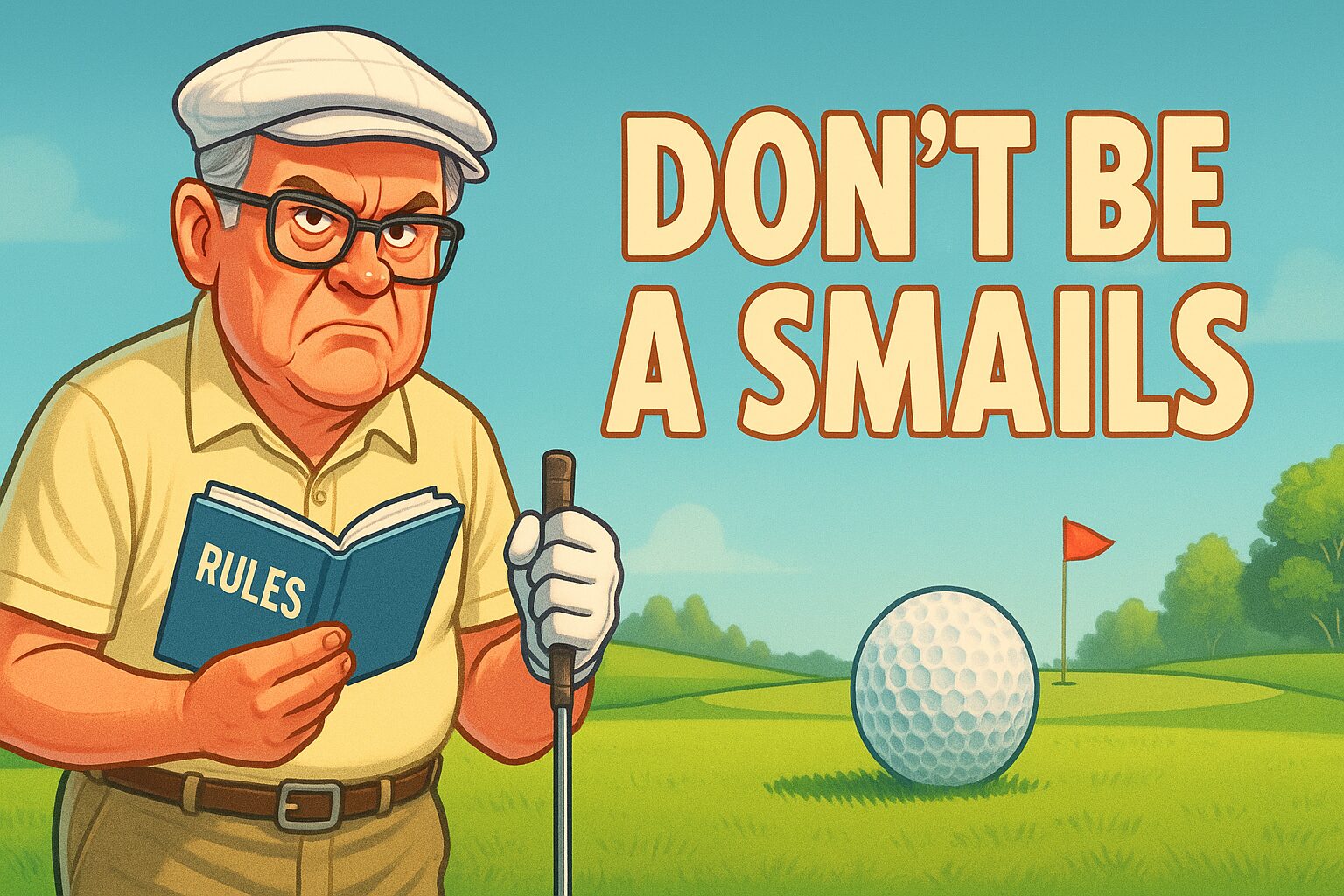
You’ve seen him. I’ve seen him. The guy who quotes the USGA rulebook like it’s scripture. He’ll happily tell you your ball moved a quarter of an inch when you addressed it, costing you a penalty stroke. He’s got a plumb bob for a three-foot putt and the personality of a rake. He is, in spirit, Judge Smails. And let’s be honest, nobody wants to be Judge Smails.
The real game of golf, the one that keeps us coming back, isn’t played by those rules. It’s played by a higher law. An unwritten code of conduct that’s all about flow, friendship, and the pursuit of that one perfect shot. It’s a gentleman’s agreement with the universe.
So, let’s talk about the rules that actually matter.
1. The Cosmic Readjustment (aka The Mulligan). Your first tee shot is a mess. It goes sideways into the woods where the gophers play. The Smails of the world would tell you to take a penalty and hack it out. I say the universe is just getting warmed up. The “breakfast ball” isn’t cheating; it’s a course correction. It’s an agreement among friends that a round of golf shouldn’t be ruined before it even begins. Take another. The Dalai Lama would want you to.
2. The Art of Flow (aka Pace of Play). This isn’t about rushing. Rushing is a fool’s game. This is about flow. It’s about being ready to hit when it’s your turn. It’s about watching your friend’s shot so you can help them find it. It’s about moving with a purpose, not like you’re searching for your car keys in a dark parking lot. Don’t be the anchor that drags the whole group down. See the line, hit the ball, walk on. Nanananana.
3. The Circle of Friendship (aka Gimmes). Is the putt inside the leather? Good enough. Pick it up. Life is too short to watch your buddies sweat over an 18-inch putt for a double bogey. A gimme isn’t just a time-saver; it’s a gesture of goodwill. It says, “I trust you, you trust me, and neither of us needs the anxiety of missing this tiny putt.” It’s good for the karma, and even better for the pace of play.
4. The Final Verdict (aka The 19th Hole). The most important rule is this: no matter what happened out there, you shake hands on the 18th green and settle things over a cold drink at the 19th. The guy who shot an 82 and the guy who shot a 102 are equals in the clubhouse. The stories get better, the putts get longer, and the bad shots fade away. This is where the real game is won.
So, forget about the fine print. Focus on the feeling. Be a good playing partner, enjoy the walk, and don’t be a Smails. You’ll find your score starts to take care of itself.
Did this speak to your soul? Pass it along to your foursome to make sure everyone is on the same page. For more deep thoughts from the fairway, be sure to follow us on social media. It’s the right thing to do.
Blog
When Golf Meets Supercars: The World Series of Golf Takes Over Skip Barber’s Mexico Resort
World Series of Golf partners with Skip Barber Racing for a two-year luxury sports series at Gran Reserva, Mexico – where championship golf meets supercars starting April 2026.

Picture this. You’re standing on the 18th green at Gran Reserva, Mexico, finishing a round of championship golf with the World Series of Golf’s signature betting format still buzzing in your veins. The sun’s dropping low. Your heart’s still racing from that final putt.
And tomorrow? You’re driving a McLaren on Skip Barber’s brand-new racetrack.
Two Sports, One Unforgettable Weekend
The World Series of Golf just announced something we’ve never seen before. A two-year partnership with Skip Barber Racing School that transforms their new Mexican resort into the ultimate luxury sports destination. It’s not just golf. It’s not just racing. It’s both, wrapped into an experience that redefines what a sporting weekend can be.
Starting in April 2026, Gran Reserva becomes ground zero for a completely new kind of event.
Year One: The Foundation
The first year lays the groundwork. You’ll compete in the World Series of Golf championship using their patented tournament format – the one that adds poker-style betting mechanics to traditional stroke play and turns every hole into a strategic showdown. High stakes. Real tension. Golf the way it was meant to be played.
But here’s where it gets interesting. While you’re playing, Skip Barber’s building their racetrack right there on the property. You’ll see construction crews working on what will become one of North America’s most anticipated racing circuits. State-of-the-art simulators give you a taste of what’s coming, letting you experience the thrill of motorsports between rounds.
VIP receptions. Celebrity appearances. Curated culinary showcases that match the caliber of the competition. It’s an invitation-only event designed for people who expect excellence and aren’t willing to settle for anything less.
Year Two: The Payoff
Then 2027 hits. The track is finished. And suddenly you’re not just imagining what it’s like to drive a supercar at speed – you’re actually doing it.
McLaren. Ferrari. Mercedes. Lamborghini. Take your pick and put it through its paces on a circuit designed by people who’ve spent over 50 years teaching professional racers how to extract every ounce of performance from a machine. Skip Barber doesn’t mess around when it comes to motorsports education, and this track reflects that pedigree.

You’ll stay in exclusive luxury accommodations at Gran Reserva, network with athletes and industry leaders, and experience both golf and racing at the highest possible level. All in one place. All in one unforgettable weekend.
Why This Matters
Michael Berg, CFO of Skip Barber Racing School, called it perfectly: “Guests will see the racetrack under construction during our first event and then drive world-class vehicles on it the following year.”
That’s the hook. You’re not just attending an event. You’re watching it evolve. You’re part of the story from day one, and by year two, you’re living the payoff.
Robert Davidman, CEO of the World Series of Golf, added this: “This partnership unites golf and motorsports in an elevated format that caters to international fans seeking competition, luxury, and adventure.”
Competition. Luxury. Adventure. Three words that sum up what makes this special.
Why Sponsors Are Paying Attention
Here’s what makes this different from every other golf tournament trying to get your marketing dollars.
The World Series of Golf’s patent-protected format keeps spectators glued to every shot. Shot-by-shot wagering. Antes that double every three holes. Strategic decisions that matter as much as swing mechanics. It’s golf designed for television, and television designed to keep people watching.
Add Skip Barber Racing to the mix and you’ve got something networks actually want to cover. Over 40 hours of TV coverage. More than 15 million media impressions. Five million-plus social media reach. This isn’t a local tournament hoping for some local news pickup. This is a broadcast-ready event with an audience that’s already paying attention.
The demographics tell the rest of the story. You’re reaching affluent golf enthusiasts who also appreciate high-performance automobiles. International travelers who think nothing of flying to Mexico for a weekend of luxury sports. Decision-makers and industry leaders who network at VIP receptions and actually have the authority to sign deals on the spot.
Title sponsorship gets you naming rights, eight playing positions, and premium TV exposure throughout the broadcast. But even smaller packages deliver value. Hole sponsors get exclusive on-course branding and social media mentions for ten grand. Golf cart wraps guarantee TV and photo exposure because every shot of the tournament includes your brand.
The opportunities are limited by design. Only 18 hole sponsors. Three presenting sponsors. One title sponsor. Once they’re gone, they’re gone.
Want the details? Check out the full sponsorship packages at wsg.golf/sponsorship.
The Bottom Line
This isn’t your typical golf tournament. It’s not your standard track day either. It’s something entirely new – a two-year luxury sports series that gives you the best of both worlds and raises the bar for what a sporting experience can deliver.
Year one plants the seed. Year two delivers the harvest. And whether you’re attending as a player or partnering as a sponsor, you’ll be there for both.
For player inquiries, contact events@skipbarber.com. For sponsorship opportunities, reach out to sponsorship@wsg.golf. These events are strictly invitation-only, and opportunities won’t last long.
Golf and supercars. Mexico and motorsports. The World Series of Golf and Skip Barber Racing School.
This is going to be something special.
-

 Product Review6 years ago
Product Review6 years agoThe Perfect Practice Putting Mat Review by Jason Tenzer
-

 Blog4 years ago
Blog4 years agoLoophole Rule Offers PGA Tour Pros a Mulligan
-

 Blog4 years ago
Blog4 years ago2021 Buyer’s Guide: The Top 10 Value Golf Balls For Distance & Feel
-

 Blog5 years ago
Blog5 years agoGolf Marriage Counselor
-

 Blog6 years ago
Blog6 years ago9 Biggest Chokes Of The Past Decade
-

 Product Review6 years ago
Product Review6 years agoTHE ADJUSTABLE IRONS: WALKING STICKS GOLF CLUBS
-

 Blog4 years ago
Blog4 years agoWhat Your Golf Clubs Say About You
-

 Equipment6 years ago
Equipment6 years agoOHK Sports Interview by Jason Tenzer










